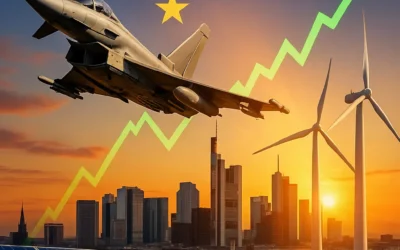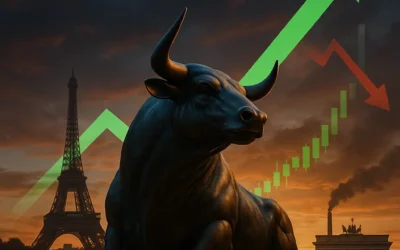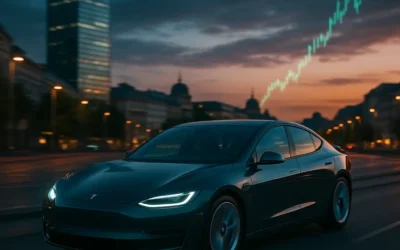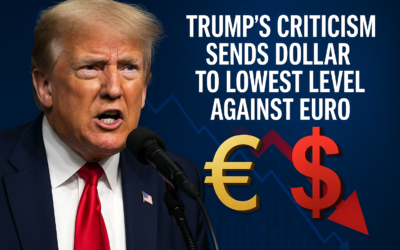
As the world continues to recalibrate after years of economic disruption, Europe finds itself at a pivotal financial juncture. From monetary policy shifts to energy transitions and geopolitical tremors, the continent’s financial landscape in 2025 reflects a blend of cautious optimism and persistent headwinds. Below is a detailed breakdown of where Europe currently stands—and where it may be headed.
Macroeconomic Landscape: A Slow Rebound
Following a prolonged period of recessionary pressure in 2023 and early 2024, Europe is now showing signs of modest economic recovery. According to the European Commission, Euro Area GDP is expected to grow by 1.3% in 2025, a notable improvement from the 0.7% growth recorded in 2024.
Nevertheless, inflation—though significantly lower than its 2022 peak—remains a lingering concern. In particular, core inflation in services, which continues to hover around 2.5–3%, is complicating the European Central Bank’s (ECB) monetary policy decisions.
ECB Policy & Interest Rates: The Tightrope Walk
At present, the ECB has kept its benchmark deposit rate at 4.00%, adopting a hawkish tone despite increasing pressure to ease monetary policy.
On one hand, inflation is slowly retreating. On the other, the ECB is cautious about cutting rates too soon and reigniting inflation. That said, if disinflation continues and broader economic indicators stabilize, rate cuts may become likely in the second half of 2025.
Meanwhile, government bond yields have stabilized, and the yield spread between core and peripheral nations (such as Italy and Spain) is narrowing—a sign of growing investor confidence.
Financial Sector: Profitable, But Vigilant
Thanks to elevated interest rates, European banks have seen significant improvements in net interest margins, contributing to stronger profitability. Capital buffers remain robust (Tier 1 capital above 14%).
However, not all is smooth sailing. Rising loan defaults—especially in real estate and small-to-medium enterprises (SMEs) across Southern Europe—are raising cautionary flags for the sector.
In response, cross-border mergers and acquisitions are picking up pace, particularly in digital infrastructure, clean energy, and AI-driven platforms. Companies are looking to consolidate and grow efficiently in an otherwise slow-growth environment.
Equity Markets: Resilience Amid Uncertainty
So far in 2025, the STOXX Europe 600 index has gained around +4% year-to-date, signaling moderate optimism among investors. Still, performance has varied widely across sectors.
Leading the way are:
- Technology
- Renewable Energy
- Luxury Goods (driven by high demand from Asia)
Conversely, sectors such as industrial manufacturing and commercial real estate have underperformed.
As a result, investors are now gravitating toward companies with strong ESG profiles, sound financials, and exposure to digital or sustainability-driven growth.
Sectoral Trends Worth Watching
Looking ahead, several industry-specific developments are shaping the region’s financial narrative:
| Sector | Key Highlights |
|---|---|
| Energy | Accelerated shift to renewables, fueled by EU Green Deal funding and carbon taxes. |
| Automotive | EV production surges as supply chain pressures ease. |
| Technology | Strong growth in AI, cloud computing, and cybersecurity investment. |
| Finance | Profit margins expand, though lending outlook remains cautious. |
| Tourism | Full recovery expected; summer 2025 poised for record-breaking travel numbers. |
Key Risks on the Horizon
Despite signs of recovery, Europe still faces multiple risks that could derail its economic momentum:
- Geopolitical instability: The war in Ukraine, tensions in the Middle East, and the rise of populist parties ahead of major EU elections.
- Debt sustainability: Countries like Italy and France remain financially fragile, with debt-to-GDP ratios surpassing 110–140%.
- Monetary missteps: Any miscalculation or delay in ECB policy shifts could stall growth or spook markets.
ESG & Green Transition: A Central Theme
Increasingly, ESG standards are becoming integral to Europe’s financial and regulatory framework. The EU Taxonomy is fully in effect, requiring companies to meet stringent sustainability metrics to qualify for green capital.
Simultaneously, carbon pricing mechanisms are reshaping cost structures, especially in high-emission industries. Companies failing to adapt risk both reputational damage and higher operational costs.
Therefore, ESG alignment is no longer optional—it’s a strategic imperative.
Conclusion: Europe at a Financial Crossroads
In summary, Europe’s financial environment in 2025 is defined by complexity and cautious progress. While risks remain—from policy uncertainty to geopolitical strife—there are clear pathways to long-term resilience.
By investing in digital transformation, sustainable industries, and maintaining disciplined fiscal and monetary strategies, the continent can build a foundation for gradual but meaningful growth.








0 Comments